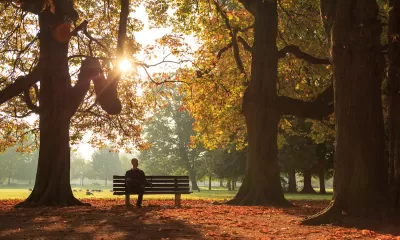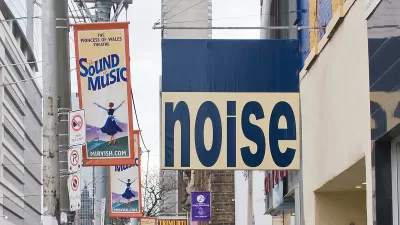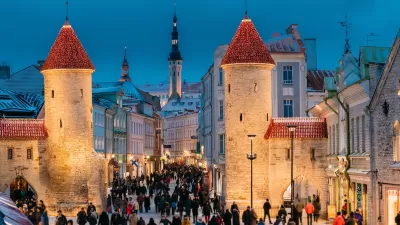Environmental noise can pose serious health risks ranging from sleep disruptions to higher blood pressure.

“In the world of occupational health, there’s long been awareness around the risk of noise-induced hearing loss, and today noise protection is a key part of workplace health and safety,” writes Emma Durand-Wood in a piece for Strong Towns.
But public health officials know less about “environmental noise,” the everyday sources of urban sound defined by the World Health Organization as “unwanted or harmful outdoor sound created by human activities, including noise from road, rail, airports and from industrial sites.”
More recently, research results have elevated noise pollution from a nuisance to a potentially severe health risk. “We now know that higher levels of environmental noise raise heart rate and blood pressure, cause harmful sleep interruptions, and are linked to cardiovascular disease, dementia, and cognitive impairment in children, among others.” In many U.S. cities, the racial and economic disparities that dictate where people live mean lower-income communities are often more exposed to excessive noise in addition to other harmful pollution.
Some urban noise is inevitable. But what can cities do to mitigate the damage and dampen unpleasant sounds? For one, they can plant more trees. “Adding trees or extra layers of vegetation alongside traditional noise barrier walls can significantly boost noise reduction.”
Durand-Wood also recommends permitting multifamily housing in more places—“Folks who prefer to or must live somewhere other than a single-family home shouldn’t be relegated to the noisiest areas, but in many places, multi-family housing is only being built along major corridors”—and reducing vehicle speeds and speed limits, which is shown to reduce the amount of associated road noise. Through relatively simple interventions, “Urban environments don’t need to be inherently noisy and harmful.”
FULL STORY: Why Are Cities So Noisy? And Can We Do Anything About It?

Alabama: Trump Terminates Settlements for Black Communities Harmed By Raw Sewage
Trump deemed the landmark civil rights agreement “illegal DEI and environmental justice policy.”

Study: Maui’s Plan to Convert Vacation Rentals to Long-Term Housing Could Cause Nearly $1 Billion Economic Loss
The plan would reduce visitor accommodation by 25% resulting in 1,900 jobs lost.

Planetizen Federal Action Tracker
A weekly monitor of how Trump’s orders and actions are impacting planners and planning in America.

Wind Energy on the Rise Despite Federal Policy Reversal
The Trump administration is revoking federal support for renewable energy, but demand for new projects continues unabated.

Passengers Flock to Caltrain After Electrification
The new electric trains are running faster and more reliably, leading to strong ridership growth on the Bay Area rail system.

Texas Churches Rally Behind ‘Yes in God’s Back Yard’ Legislation
Religious leaders want the state to reduce zoning regulations to streamline leasing church-owned land to housing developers.
Urban Design for Planners 1: Software Tools
This six-course series explores essential urban design concepts using open source software and equips planners with the tools they need to participate fully in the urban design process.
Planning for Universal Design
Learn the tools for implementing Universal Design in planning regulations.
Caltrans
Smith Gee Studio
Institute for Housing and Urban Development Studies (IHS)
City of Grandview
Harvard GSD Executive Education
Toledo-Lucas County Plan Commissions
Salt Lake City
NYU Wagner Graduate School of Public Service





























